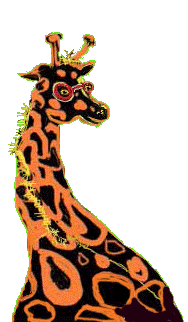It
was grim. The
frayed edges of professional courtesy were rapidly unraveling.
We
were into the ninth hour of a marathon four-day charette to
design an exhibition plan for the entire third floor of a
major new museum project.
Academicians, artists, educators and psychologists from around
the country had been flown in and randomly assigned to three
independent teams. Each team of guest curators was given a
separate conference room and told they had 80 hours to conceive
and submit their most competitive design proposals.
No
iIndividuals on any of the teams had ever worked together
before. There were no pre-designated leaders. We were a collection
of diverse individuals with remarkably different backgrounds
and temperaments.
The only thing we knew we had in common was a shared passion
for the subject of human creativity. Part of the challenge
was to invent our own working process. I was assigned to Team
Three.
By
hour ten, personality conflicts within Team Three had slashed
our early enthusiasm into bloody shreds of loathing.
HE
was an academic cognitive psychologist who had written three
scholarly tomes on the subject of creativity. Analysis, classification
and hierarchy were his gods. He liked flip charts and lists.
It was his habit to be in charge. He tended to perceive others
in terms of their potential to challenge his authority.
SHE
accused him of letting his love for taxonomy
blind him to the dynamics of the creative experience itself.
He
couldn't hear her and didn't think there was much worth listening
to. She was just a clinical psychologist whose book on creativity
for school teachers was filled with pictures and touchy-feeley
exercises. Besides, she was eight months pregnant. Not a contender.
Hormonally disqualified and overly impressed with chaos theory.
He
assessed the other members of Team Three: a twenty-something
graphic artist from Australia who believed that Star Trek
Deep Space Nine was channeling extraterrestrial higher truths
to unenlightened earthlings; an older gent with the watchful
patience of a Quaker at meeting who hadn't spoken three sentences
all day; a freckle-faced woman whose passion was gardens (Gardens?
How did she sneak in here and what could gardens possibly
have to do with creativity?); and a wild blonde cyberartist
in jeans and cowboy boots who talked about brainwaves and
mind music (which, I admit, is how he described me).
What
was a responsible professor to do? Being associated with such
people could jeopardize his career!
We
tortured ourselves trying to find common ground long after
night had scribbled the windows dark. By 9:00 PM we gave up.
Our leave-taking was barely civil.
In the morning our hosts
called all groups together to give a progress report. Team
Three looked at each other in panic and disgust. We had nothing
to report! The other two groups now had a major head start
on us. This was a nightmare. We were about to publicly humiliate
ourselves in front of respected colleagues. Team Three filed
dismally into the larger meeting room, eyes pegged to the
floor, silently furious with one another. Team One was asked
to speak first.
Their spokesman was a charming elder of the field, an aggressive,
impressive raconteur from New York with encyclopedic stories
of creativity research. Usually boisterous and talkative,
he was oddly subdued, scrutinizing his knuckles. He stood
slowly, inhaled, squared his shoulders, shifted his gaze to
a fascinating fire sprinkler on the ceiling, and said bluntly:
"Team One has spent the entire first day fighting. We are
still chasing our tail around in circles arguing about how
to begin."
Team
Two leapt to their feet to give Team One a spontaneous standing
ovation. They too had burned a full day mired in personality
conflicts.
Arc
lightening exploded up my spine. The clinical psychologist
gasped. Our sci-fi fan and the somber Quaker started to grin.
Our Team Three professor fell off his chair. We all burst
into laughter, rolling and bumping against each other until
our stomach muscles cramped, gasping and choking with tears
running down our cheeks.
Over
35 years ago Arthur Koestler coined the word "bisociation"(1)
to refer to the abrupt explosions associated with laughter
that can pop thinking out of a single plane into entirely
new multidimensional matrices.
More
than a decade ago Norman Cousins turned UCLA Medical School's
focus to laughter as a momentary seizure originating in the
brain that instantly enlists the involuntary and parasympathetic
nervous systems to render torso muscles, the diaphragm and
the respiratory system into spasm, stimulating the limbic
system to secrete a medley of healthful enzymes.
Laughter
crosses wires in a flash of surprise to dispel tension, calm
fear and open the desire to trust--all essential for collaborative
team-building.
It
gets better. Scientific detectives fascinated by the relationship
between brain development and the infant's earliest laughter
(2) are discovering new respect for the most ancient brain
centers nestled beneath the right and left hemispheres of
the cerebral cortex, such as the hypothalamus and amygdala(3),
which govern emotions, the sense of smell and our complex
filing systems for memory.
Perhaps there is substance in the old joke that most the world's
problems could be solved rapidly if we all just had one Really
Great Lunch each week, defined as one in which someone gets
to laughing so hard that beer spurts out his nose.
New research reveals that playful laughter stimulates neural
reorganization and even the development of new brain structure.
Imaging
systems used by brain researchers track laughter as a kind
of short-circuit throwing sparks between formerly unrelated
neural pathways. The impulse to laugh--whether triggered by
a bushel basket full of frisky puppies or Team Three's abrupt
situational insight--is a holographic multipoint excitor of
sudden chaotic associations between fields of formerly unassociated
neurons, triggering growth of dendritic extensions, stimulating
neuroreceptors and pumping neurotransmitters into new circuitry.
In
a fraction of a nanosecond, Team Three's laughter transformed
us into a brilliant working team eager to create a masterpiece
together. We traded posturing and positioning for generosity,
respect and humor, alternating between raucous brainstorming
and careful attention to each member's ideas. The stubborn
diversity that had blocked us earlier now became our engine
for productivity.
By our next report to the larger group, we'd learned to tap
into the true power of synergy, using points of friction to
ignite surprising fireworks of creative insight. (We'd also
learned that carrot juice and jasmine tea are equally volatile
in a Really Great Lunch).
Our
extraordinary work was a source of tremendous pride to us,
and an inspiration to others. Laughter, we'd discovered, is
not a bad way to start a friendship, and the only way to start
a demanding collaborative task.


